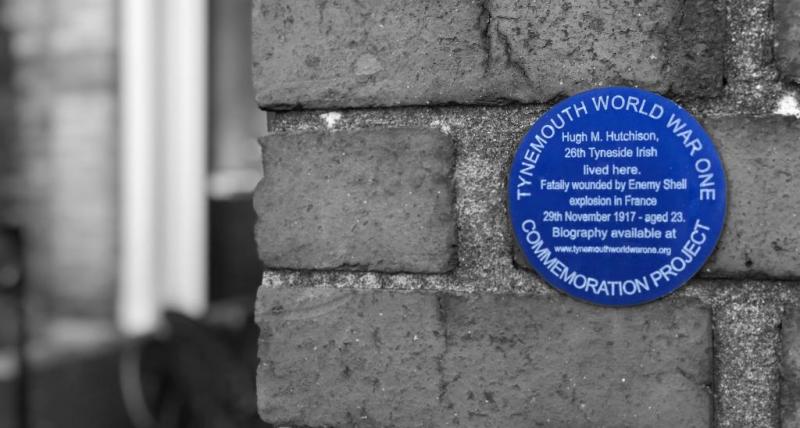
A poignant memorial trail has been created for a North Shields community that suffered devastating losses in the First World War.
Over 100 men from the streets between Linskill Terrace, Tynemouth Road and Park Avenue were either killed during the war of 1914-1918 or died later of their injuries.
Dozens of homes have received a blue plaque to identify a soldier who once lived there, as part of a scheme by the Northumbria WW1 Commemoration Project.
Now the group have created a memorial trail and published a guide, supported by North Tyneside Council, to ensure the men and the sacrifices of war are never forgotten.
Project coordinator Alan Fidler says the memorial is a stark reminder of the price paid by North Tyneside communities during the Great War.
“In that triangle of streets 108 men were killed. They don’t all have plaques because a lot of the properties are no longer standing but there are a number who do have plaques who we selected because they had a range of different stories about them.
“The rate of loss in the borough of Tynemouth was quite phenomenal and the plaques show the scale of that. Almost everyone knew somebody who didn’t come home from the war and we could easily create another four or five trails like this one.
“We believe the trail will appeal to people who used to live here or amateur historians, or people who feel deeply affected by these men’s stories.
“We hope local people and visitors will find the guide interesting as they visit all 18 featured and pause at each home to remember the man represented by the plaque, and read their story as told on our website.”
More than 300 plaques have been fitted to homes in the borough since the scheme began in 2014.
The 1.5 mile trail begins at the Linskill Centre and takes around 60 minutes to complete.
The first plaque is at the home of Scottish writer, Caroline Kemp, on Linskill Terrace.
She was inspired to write a poem for Hugh M. Hutchison, a 23-year-old soldier who lived in her house before being fatally wounded in France in 1917.
She said: “I looked him up on the database, which is fascinating; lots of people are looking at the blue plaque when they come by. It’s a mixture of sadness but it’s also beautiful to have the memory and remember it and I think Hugh and his family would be very pleased this trail was here.”
The project has received the backing of North Tyneside Council.
Councillor Gary Bell, North Tyneside Council’s Armed Forces Champion, said: “If people want to know more about these brave men and boys, who died at a tragically young age, they can go and just stand for a minute outside and look at a house where you know that person once lived. It makes for a deeply-moving tribute to the men who lived here and lost their lives and the sheer number of plaques tells you everything you need to know about the scale of the loss in this community.”
Other projects by the group include a unique commemorative wall listing the casualties in order of the streets where they lived, and a memorial garden for men whose homes are no longer standing, both of which can be seen at the Linskill Centre.
Copies of the guide can be picked up at the Linskill Centre; Keel Row Bookshop; North Shields Customer First Centre – Discover North Tyneside; and the Fishing and Maritime heritage centre on the Quay.
Further information about the group’s activities can be found at www.northumbriaworldwarone.co.uk
